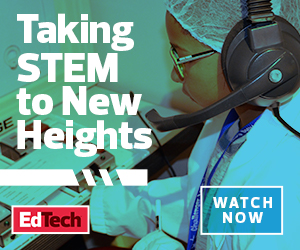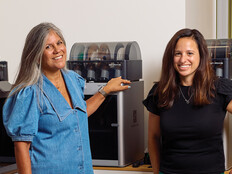The Value of Creating Immersive Learning Experiences Online
Today’s students are connecting with their teachers via videoconferencing and online collaboration tools from home, but they may not be getting the direct, constant instruction they would get in a traditional classroom, says Richard Henderson, director of global education solutions for Lenovo.
“Students may struggle to connect with the principles and educational methodologies with new material, especially in the area of STEM-based learning, which requires, in a lot of cases, more instruction and more hands-on interaction with the teacher,” he says.
Integrating immersive technology into virtual learning experiences can help teachers address that challenge. It allows them to spark curiosity and creativity among students, even if they’re not with them in person.
Ways to Make Learning More Immersive from a Distance
While many teachers have already seen the benefits of using VR and AR in a traditional classroom, they’re now realizing its potential to improve knowledge retention and experiential learning during online instruction.
Instead of just assigning readings about Ancient Greece, teachers can transport students to the Acropolis of Athens and learn about Greek history and architecture with the Google Expeditions mobile app and a mobile headset.
For students who don’t have access to a headset, teachers can provide 360-degree videos that allow students to explore a scene from different perspectives, making them feel as if they were actually there.
Teachers looking to make STEM lessons more stimulating can also turn to interactive VR modules. For example, Lenovo and Veative Labs offer modules for grades four and up in areas such as science, math and career technical education pathways for health sciences.
The modules were made specifically for remote learning and can be accessed on a web browser, Henderson says. They also come with formative assessments so that teachers are able to track student progress.
There’s even an immersive way to teach computer science remotely. Platforms such as VEXcode VR enable students to code without using a coding robot. Instead, they can code a virtual robot using block-based coding. The platform also comes with activities that can be easily integrated into a STEM lesson plan.
Jason McKenna, director of global educational strategy for VEX Robotics, says that making these types of platforms available to students not only leads to higher engagement but also encourages them to experiment and tinker.
“We know that immersive learning is key to creating a space where students feel autonomously invested in their work and their success,” he says.











